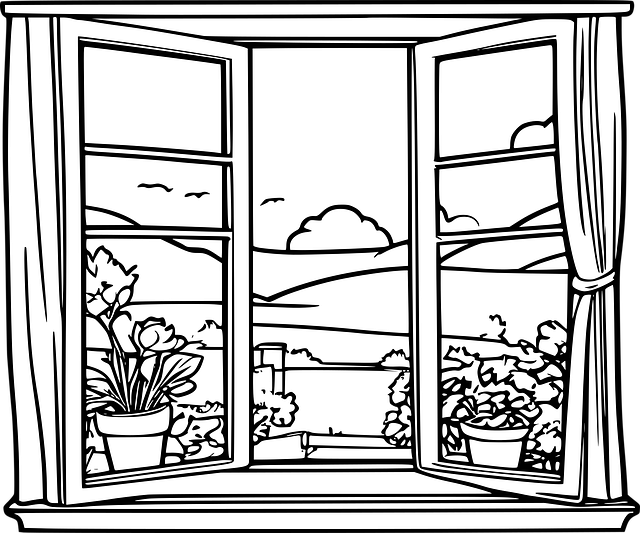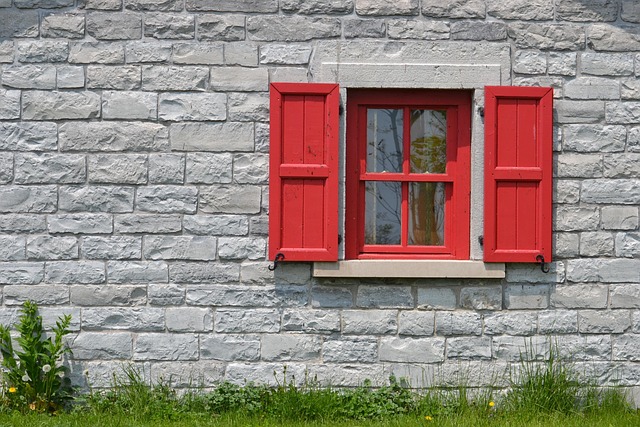Optimize Energy Efficiency with Solar-Powered Automatic Window Installation

Solar-powered automatic windows revolutionize window technology, offering eco-friendly ventilation r…….
Automatic Window Systems: A New Era for Energy Efficiency and Comfort
Automatic window systems represent a significant advancement in the realm of building automation, energy management, and occupant comfort. This comprehensive article will explore the intricacies of these systems, their global impact, economic considerations, technological advancements, policy implications, challenges, case studies, and future prospects. Readers will gain a thorough understanding of how automatic window systems are transforming buildings into smart, efficient, and responsive environments.
Understanding Automatic Window Systems
Automatic window systems are mechanical or electrically operated devices that open, close, and adjust the position of windows without manual intervention. These systems often integrate sensors, actuators, and control mechanisms to respond to environmental conditions such as light levels, temperature, humidity, and weather forecasts. They can be programmed to optimize natural light, improve indoor air quality, enhance security, and reduce energy consumption for heating, ventilation, and air conditioning (HVAC) systems.
The core components of an automatic window system typically include:
Historically, window automation has evolved from simple manual controls to sophisticated systems integrating Internet of Things (IoT) capabilities. The significance of these systems lies in their ability to enhance building performance, occupant well-being, and energy efficiency, all while contributing to the broader goals of sustainability and smart city development.
Global Impact and Trends
The global impact of automatic window systems is multifaceted, influencing construction practices, energy policies, and urban design. Key trends shaping this trajectory include:
Different regions are affected in various ways, with North America and Europe leading in the adoption of these systems due to stringent energy codes and environmental regulations. Countries like China and India, driven by rapid urbanization and a focus on smart cities, are also significant contributors to the market growth.
Economic Considerations
The economic aspects of automatic window systems encompass market dynamics, investment patterns, and their role in economic systems. These systems offer substantial energy savings and operational efficiencies, which can lead to reduced utility costs and lower building maintenance expenses. The initial investment is often offset by the long-term benefits, making them an attractive option for both new construction and retrofitting existing buildings.
Market dynamics reveal a growing demand for intelligent building solutions, with automatic window systems being a key component. Investment patterns show a trend towards sustainable technologies that offer a return on investment through energy savings and enhanced property values. These systems are also creating new job opportunities in design, installation, maintenance, and software development.
Technological Advancements
Technological advancements in automatic window systems have been significant, with improvements in sensor precision, motor efficiency, and communication protocols. Innovations such as solar-powered actuators, machine learning algorithms for predictive operations, and integration with building management systems (BMS) are pushing the boundaries of what these systems can achieve.
The impact of these advancements is profound, with automatic window systems now capable of responding to changing weather patterns, optimizing daylight usage, and reducing the strain on HVAC systems. The future potential includes even more sophisticated systems that can learn from user preferences and environmental data to provide personalized comfort levels.
Policy and Regulation
Policies and regulations play a crucial role in governancing the deployment of automatic window systems. Building codes, energy efficiency standards, and green building certifications all influence the adoption rate. Legislation such as the International Energy Conservation Code (IECC) mandates compliance with certain energy-saving measures, which often includes high-performance windows and window systems.
In Europe, directives like the Energy Performance of Buildings Directive (EPBD) drive the integration of smart technologies in buildings. Additionally, subsidies and incentives are provided to encourage the installation of such systems, particularly in the residential sector. These policies and frameworks not only ensure energy efficiency but also foster innovation and competition within the market.
Challenges and Criticisms
Despite their numerous benefits, automatic window systems face challenges and criticisms. Some of these include:
To address these challenges, manufacturers are working on making systems more affordable, developers are focusing on enhancing security features, and industry professionals are standardizing installation practices. Actionable solutions include developing scalable models for different market segments, implementing robust cybersecurity measures, and ensuring interoperability with existing building systems.
Case Studies
Several case studies highlight the successful application of automatic window systems. For instance, the Edge in Amsterdam, one of the world’s most sustainable office buildings, uses automated windows to maximize natural light and ventilation while maintaining high indoor comfort standards. Another example is the retrofitting of the historic St. Mary’s Church in Nottingham, UK, where automatic window systems were installed without altering the building’s external appearance, thereby preserving its heritage.
These case studies demonstrate the versatility and effectiveness of automatic window systems across different types of buildings and climates, providing valuable insights for future projects.
Conclusion
Automatic window systems represent a significant advancement in building technology, offering a host of benefits that span from energy savings to enhanced comfort and security. Their global impact is evident in the changing landscape of construction, energy policy, and urban development. While challenges remain, ongoing technological advancements and supportive policies are facilitating their adoption. As these systems continue to evolve, they will play an increasingly vital role in achieving a more sustainable and efficient built environment.
The table below summarizes the key points discussed in this article:
| Section | Key Points |
|---|---|
| Definition & Components | Sensors, actuators, control units, software, safety mechanisms. |
| Global Impact & Trends | High adoption in green buildings, integration with smart technologies, demand for energy efficiency. |
| Economic Considerations | Long-term cost benefits, job creation, market dynamics influenced by ROI and sustainable technologies. |
| Technological Advancements | Solar-powered actuators, machine learning, integration with BMS. |
| Policy & Regulation | Compliance with building codes, energy efficiency standards, subsidies for residential sector. |
| Challenges & Criticisms | High initial costs, data privacy concerns, technical complexities, system reliability. |
| Case Studies | Successful applications in sustainable buildings and heritage sites. |
This comprehensive overview underscores the multifaceted role of automatic window systems in modern building practices and their potential to shape a more efficient and sustainable future.

Solar-powered automatic windows revolutionize window technology, offering eco-friendly ventilation r…….

Sensor-activated window systems revolutionize home efficiency, providing eco-conscious homeowners wi…….

Homeowners seeking to enhance energy efficiency should consider investing in modern automated slidin…….

Solar-powered automatic windows represent a revolutionary approach to home and building automation,…….

Motorized window solutions are revolutionizing home automation, offering enhanced control over light…….

Motorized window solutions transform residential and commercial spaces by offering enhanced comfort,…….

Property owners should prioritize professional installation of automated sliding windows for optimal…….

Motorized window solutions transform traditional window management into a modern, convenient experie…….

In the digital age, window experts are evolving their skills to integrate advanced technologies, par…….